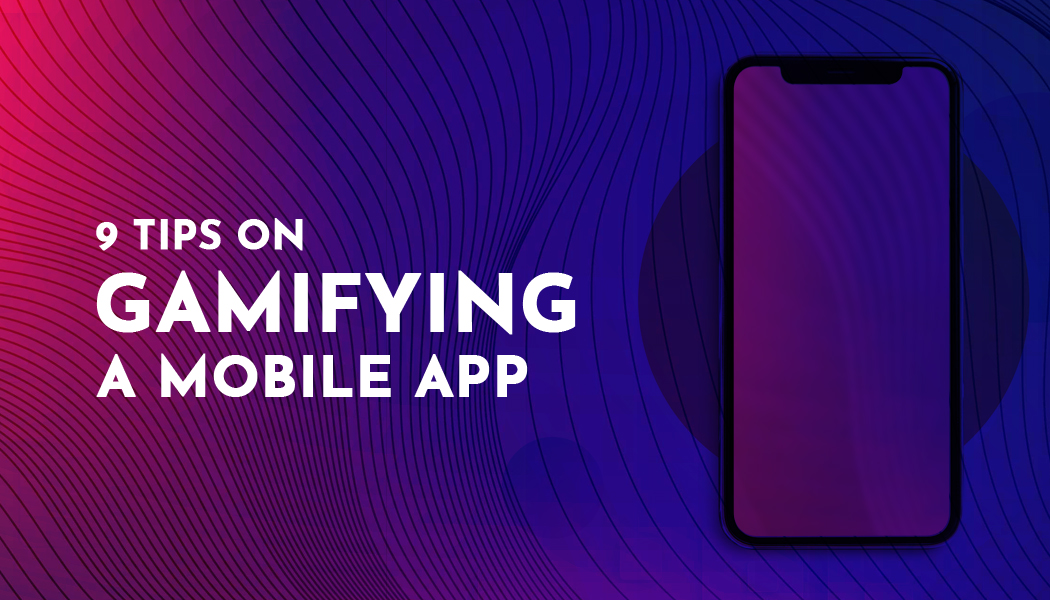9 Tips on Gamifying a Mobile App
The mobile app market grows bigger and bigger by the day. Statista shows that the mobile app markets house over 5,7 million mobile apps. Business owners can learn a thing or two and branch out carefully into this mobile app world.
Because there are so many mobile apps out there, it can be difficult to come up with something innovative that stands out and is of interest to users. Boring apps will go unnoticed, or users will try them, but forget about them sooner or later. Of course, this leads to losing new users and their money.
Game categories had over 1,651 million active mobile users in 2020, a Statista study shows. It’s estimated to reach over 2,000 million by 2025. So, it’s clear that people love games. Many developers are implementing game-like elements like points, badges, levels and other rewards to their apps.
As a business owner, you may want to take into consideration gamifying your app, too. That means adding game-like elements to your app. When you don’t have the expertise to do it yourself, go for one of the top mobile app development companies. You just have to reach out and find the right one for you. The right team can make changes that incentivize people to come back to your app and to keep using it.
Let’s talk about 9 tips that can help you gamify your mobile app to increase usage and retention.
What is Mobile Gamification and Why You Need It
Gamification is a concept based on using tactics like rewards, competition, scoreboards, progress display and social interaction. Users are more likely to fulfil a task when they know they will be rewarded.
A video game study from 1998 shows that human brains release dopamine when playing games and progressing through all sorts of challenges. When you gamify a mobile app, you replicate that response. In a way, gamification is related to human psychology because it offers incentives that trigger a human response to be rewarded.
What can you receive, as a business, from gamification? Social presence from users, without putting in too much effort, leading positions in searches, active users on social media and growth with the app, for example.
Tips to Gamify Your Mobile App
1. Set objectives for your goals
First, you need a purpose to help you implement a solution. Know what you want from your mobile app first. More engagement? More positive reviews? Returning users? What you choose will shape the type of elements you use.
For example, if you’re looking to build a community, add cooperative goals that work towards a common goal. If you want to incentivize users to spend more, work on harder-to-attain rewards. They will be more incentivized to pay for certain enhancements.
2. Research your audience to see what they want
Base your gamification strategy on your target user’s needs. If you don’t consider your ideal user profile, you may lose the clients you want. Research on your ideal buyer helps you find out which users are interested in what you’re selling and how they behave. You can use these details to your advantage and make the right changes to your mobile app.
You may think that something has value because it’s to your liking, but that doesn’t mean customers will feel the same. That’s why it’s encouraged to make an ideal client profile and discover what they want and what motivates them to complete a task. In this case, what will incentivize them to use your app instead of your competition.
3. Build a gamification loop
Gamification loops represent the cycle of actions that incentivize users and make them enjoy the app. A loop consists of the following steps:
- Motivation – the mobile app gives the customer a reason to feel motivated. It can be competition, achieving goals, obtaining something of value, etc.
- Action – the act the user must perform in order to serve the motivation.
- Feedback – completing steps leads to earning a reward. This step acts as a motivation reinforcing stimulus. When the user is happy with his reward, he will have the motivation to continue using your mobile app.
Apps like Starbucks mobile work on this gamification loop. The users make purchases (action) to earn free drinks (motivation). When they make a purchase, the system rewards them with stars (feedback) to redeem for free products.
4. Select the right game mechanics
Based on your ideal user profile, you can implement certain game mechanics in your mobile app. Here are a few popular examples:
- Currencies – users collect coins to buy in-game things or redeem freebies
- Levels – completing certain tasks unlocks new levels, with distinct complexities
- Progression representations – graphical symbols that show progress within the mobile app
- Social interaction – chats and groups for users to interact with each other
- Badges – visual representations of the achievements collected in an app/game
- Leaderboards – ranking systems that show leaders in your app’s activity
- Challenges – certain events that take place within the app which are meant to reach a certain goal
- Points – simple rewards system used for different aspects within the app.
5. Give your users rewards
The game mechanics mentioned above act as rewards, which is an important part of gamification. The rewards represent the feedback stage of the gamification loop. It’s what keeps users engaged and active.
Implement rewards for passing certain levels or checkpoints. Your users will be constantly rewarded for their activity. You can use levels, features, cosmetics, discounts, deals or privileges. Don’t forget to always reward your users when they reach certain tasks.
6. Integrate social elements
People love to share their accomplishments. Even when we’re talking about passing a level in a mobile app or a game. And it’s easy to do so, especially when you share by pressing a button.
Transform your app to allow users to share their badges, features and scores to their social media. They can find common denominators, new friends and new topics of discussion.
They receive positive reinforcements, and they feel recognized. The good feelings and that feeling of accomplishment drives them to come back and pass the next level, for example. Of course, they can also promote your mobile app in the meantime. And it’s free!
7. Keep things simple
Gamificating a mobile app is a complex process, even for developers. However, the game elements you implement should remain intuitive and simple from a user perspective.
If your app is too complicated to understand or use, no one will want to use it. Existing users lose their interest and stop interacting with your app. That defeats the purpose of upgrading your app to game status.
Interact with your users regularly to scope out what they like and what they’d like you to change. This way, you can be sure the game elements you’re implementing are to your users’ taste.
8. Show creativity
In the end, gamification relies on originality and you have all the freedom you want. The elements you implement don’t have to feel like a game. But they should respect the motivation-action-feedback cycle.
A registering process with a progress bar and rewards when users complete the registration is gamification, although it doesn’t feel or look like a game.
9. Test your App
Before being launched, games are carefully tested. You should follow the same step to make sure everything is in order. Check if the gamification elements are well integrated and add to the experience.
You can release your gamification elements over time, you don’t have to take them live all at once. That way, you can see how they impact your user retention and engagement.
One way to test your changes is to have a beta release. Test your gamified mobile app with part of your targeted audience. Ask for feedback and learn what needs to be changed and what doesn’t.
Conclusion
Now that you learned more about gamification you know what changes to make to your mobile app to make it more attractive to new and existing users. Go light with gamification elements, though. Your goal is to improve user experience without saddling users with unnecessary elements. Be subtle enough with what you change, and your users won’t even know it’s there. And they’ll still enjoy the benefits.




